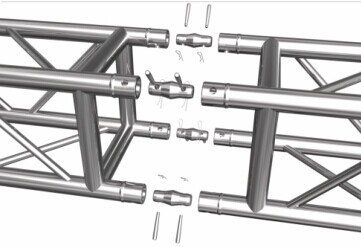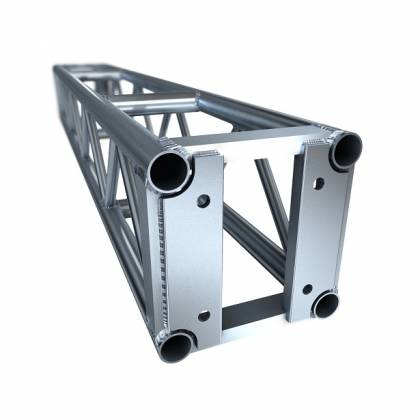By definition, a truss is a framework, which consists of rafters, posts, and struts, and allows to support different structures and is widely used in audio and lighting field. According to Engineering, truss is a body that “consists of two-force members only, where the group of people who has organized so that the assembled as a whole and behaves like a single object”. A ‘two-forced member’ is formed by components where force is applied in two points.
There are two main types of truss, spigot truss (pin truss) and bolt truss.

Spigot truss is made up of aluminum alloy (6082-T6) and best used for live stages, theatres, exhibition booths, weddings and more. It is rust-proof, light in weight and can handle a high load capacity. Spigot truss is more popular and easier to arrange than the bolt truss and is easily transportable.

Bolt truss is made up of aluminum alloy (6082 – TC) and is also used for events, concerts, weddings, exhibition booths and more. It is similar to spigot truss where it is used for hanging lights, audio, speakers and more.
In all reality, there is not much of a difference between the two. Bolt truss and Spigot truss are built differently with different ways to attach to another. One with bolts and the other with pins. Bolt truss provides more space to add to the truss without as many cross-members as spigot truss. Spigot truss has moments where pins get stuck, or something wasn’t tightened enough and it caused the pin to get stuck where the bolt truss is attached easily with the bolts and a wrench. Either type will do the job, choosing which is considered better is based off of personal preference.
